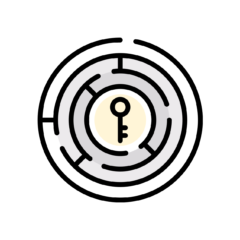Since we are seeing a major uptick in senior UX Designer roles in our agency, I thought I would help put together some of the input we have received from hiring managers about what they are looking for.
It should go without saying, but for a designer, a portfolio is the most important part of your professional profile. You should have a link to your portfolio link on your LinkedIn profile, on your resume, and any other online platform you use for marketing yourself. A lot of designers want to know what should be included in your portfolio. From our hiring managers:
Your portfolio shouldn’t be just a series of "pretty pictures". It should clearly delineate your *process* for solving design problems.
Identify the problem you are tackling
-Delineate your ideation(s) to help resolve the problem
-Incorporate items like drawings, wireframes, prototypes, etc.
-Include your potential solutions, and *why* you have created each of them
-Showcase the final solution with detail about how it solved the initial problem
After your portfolio, your resume is your next self-marketing tool. I have seen a lot of design-oriented resumes that are lacking critical information. Designers have a tad bit more leeway when it comes to creativity and flexibility on an actual resume in terms of style, but elements need to be easy to read (the more graphics on it, the harder that is). Employers STILL want to know who/what/where/when/how.
This includes your employers/clients, and attached to *each* employer (who): what their general business is; where (this is their industry niche as well as geolocation); when is the timeline you were working with the client and *each project* in some sort of chronologic order; how – what tools/technologies/methodology did you use. Finally, if you worked as an actual employee, you should be able to include some metrics about the project. For example, if you redesigned the UI for a mobile app for an ecommerce company, how much new traffic/new customers were logged? What was the boost in revenue in the first 30/60/90 days?
As big data has reshaped business and marketing by providing exceedingly granular information on metrics that impact how businesses measure and scale customer and industry behaviors, trends in resumes and what hiring managers want has also changed. The further along in your career you are, the more detail you should be able to provide with numbers: budgets, revenue impact, timelines, size of projects (#, $, %). While it can be difficult to provide longer term numbers as a consultant or freelancer, you *should* be able to invoke the scope of work/contract for some basics. Did you come in under budget and early? Were you able to provide concepts in 1 iteration vs. multiple? If the client hired you for multiple projects instead of just one over the course of a project *say so*, as that indicates they liked your work and felt that you were able to gel with their vision. Since you may not have access to the metrics that show the success of a project, it is absolutely vital to be detailed on your process from inception to delivery.
Designers have a lot more ways to sell themselves than other professionals, but the "pitch" needs to be crisp, clean, and targeted.
